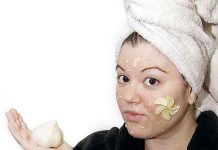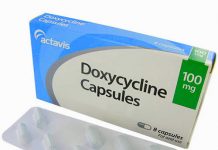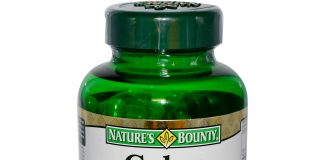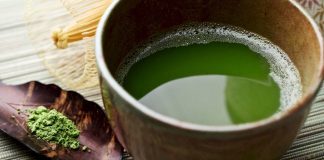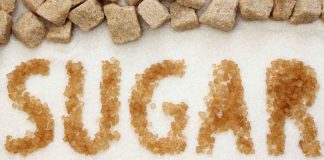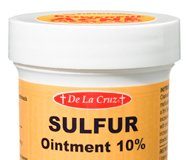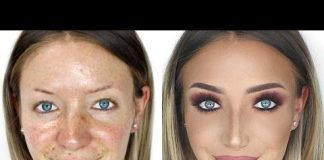Contents
Editor’s Note:-We recommend Exposed Skincare and ClearPores as the best acne treatments available in the marketplace. You are advised to check them out. Read our review here.
You might also be interested in Acne no more. which has very effective tips to beat acne for lasting results (but not the fastest results).
Tretinoin or Retin A cream is an effective topical medication for skin problems due to UV damages such as acne and aging signs. The active ingredient, tretinoin, which is also known as trans-retinoic acid, is the derivative of Vitamin A. This topical formulation is the only clinically proven and FDA approved topical prescription to effectively treat pimples, acne, wrinkles and dark spots. Tretinoin is a yellowish orange crystalline powder with comfortable floral scent. You might wonder what USP means. It simply refers to emollient and moisturizer.
Tretinoin cream is sold under different brand names such as Obagi, Retin-A, Avita and Renova. All of them, however, serve the same purpose: to rejuvenate skin by increasing skin cells regeneration rate and stimulating collagen production. It is definitely the top choice for individuals with acne-prone skin and aging skin with wrinkles and brown spots.
Long-term use of this medication improves repair cycle of the skin which helps to promote the exfoliation of the epidermal cells. Individuals who have been suffering from chronic acne or recurring acne will see a noticeable difference within six to eight weeks. Individual with aging signs due to long-term exposure to sunlight will have a smoother, younger skin after using it as it helps to reduce facial wrinkles and skin discoloration by decreasing the breakdown of collagen in the dermis but instead, increase the synthesis of collagen.
Tretinoin and acne
Acne is considered to be a condition of the sebaceous glands that occurs when pores in the surface of the skin become blocked. These blockages are usually due to either excess sebum production, or to dead skin cells that should have been sloughed off but instead plug the pores. Excess sebum production is associated with hormones, namely an increase in androgens within the system, or an over-sensitivity to the androgens already present. Retention of dead skin cells is referred to as abnormal epithelial desquamation, desquamation being the shedding of the outer layer of skin. Acne treatments often focus on addressing either hormones or pore blockages, and Tretinoin’s focus is on keeping the pores clear.
Tretinoin is a first-generation retinoid that was released as a topical acne treatment in the US in 1971. Retinoids are chemically very similar to vitamin A (retinol), which is an essential nutrient required for healthy skin. Used primarily for comedonal acne, in addition to other skin disorders, tretinoin keeps pores open through two mechanisms. It decreases the “stickiness” of epithelial cells so that they are exfoliated more easily, and it increases the turnover rate of epithelial cells, so that the cells are shed more quickly before comedones (blocked pores) can form. Without dead cells to plug the skin’s pores, acne is much less likely to form.
One important thing to note about using tretinoin to treat acne is that skin problems may get worse before they get better. This can include redness, scaling, an increase in acne lesions, and itching or burning sensations that may persist for a few weeks before the acne begins to clear.
Reports vary between 2 and 9 weeks to see an initial improvement, and sometimes as many as 12 weeks before the full improvement is noticeable. This is often the case, even if tretinoin is used on a daily basis. One other side-effect linked to tretinoin, in addition to acne worsening initially, is thinning of the skin. This effect is also noted in another first-generation retinoid, isotretinoin.
Thin skin may not be too much of an issue, however, if certain activities can be avoided, namely hair removal by waxing. Also, sunscreen with an SPF 15 or higher is recommended if sun exposure is expected.
Although still used in many acne treatments, tretinoin has been somewhat upstaged by newer second and third-generation retinoids, which are more specifically targeted towards acne problems. It is still used, however, in many common topical acne treatments, including Avita, Renova Emollient, Retin-A, and Retin-A Micro, all well-known products.
When trying to treat acne, retinoids are very useful in preventing the clogging of pores that can lead to acne problems. They should not be used in combination with certain products and medications, so if you’re interested in trying tretinoin, speak to a dermatologist or doctor to develop an acne treatment plan that is tailored to your skin.
What strength to use?
Different manufacturers produce different strengths of tretinoin cream where some concentrations are found in one but not the other brands. An example of this would be Tretinoin Cream 0.04% which can only be found under the brand name Retin-A. The concentration refers to the w/w in oil-in-water emulsion formulation. In other words, in Tretinoin cream 0.05%, 0.05mg of tretinoin is dissolved in 1g of gel or cream. Other than the active ingredient, this formulation also contains benzyl alcohol, butylated hydroxytoluene, medium-chain triglycerides, cetyl alcohol, edetate disodium, methylparaben, propylparaben, water, stearic acid, stearyl alcohol, steareth-2, steareth-20 and xanthan gum as inactive ingredients.
This formulation is also manufactured in gel and cream form. I personally prefer cream over gel when the weather is dry as I have a rather dry and sensitive skin. My hypersensitivity to alcohol causes skin irritation and produces red rashes when I apply products with high alcohol content. However, my skin allergic reaction is minimal with both tretinoin cream and gel. For me, cream works better during autumn and winter as it serves as a better moisturizing agent. On the other hand, when the weather is hot and humid, gel is a better option. It is absorbed better and I would not have to worry that it would stain my pillow at night.
Side effects
Tretinoin makes skin more sensitive to sun. Therefore while using tretinoin, sun protection is necessary. Tretinoin also dries the skin and a moisturizer may need to be used to keep skin supple.
You should talk to your doctor about the oral Vitamins you may be taking. If you are taking oral Vitamin a, that may cause problems. Tretinoin may also cause itching and redness if it is used along with products that may contain skin-drying agents such as Sulphur and alcohol, etc.
There are some side effects that are rather unpleasant like temporary pigment changes and swelling and scaling of skin as well as flushing. These side effects are expected and one should not panic unless the symptoms remain. Tretinoin acne control is available in gels and in lotions for topical use. If you use them consistently they can produce favorable results, depending on your skin type. But for an effective way to implement the best skin care for acne, I would recommend looking into natural remedies.
How Natural Acne Remedies Get The Job Done
There are natural remedies that are very obscure to the general public that go along way in providing the best skin care for acne. These natural ingredients include things like lemon juice, garlic, and red tomato pulp. These are all things that I have used on my face and within under a week, my acne was completely gone. Completely. These are things that you will not hear from commercials where companies that manufacture these topical gels and creams advertise.
True skin care for acne resides in natural supplements that are overlooked and untapped. Since they are natural, they don’t come with all the chemicals and processed manufactured ingredients made at pharmaceutical labs and they are completely 100% SAFE and EFFECTIVE. Not only safe and effective but astonishingly quick.
I was at a loss for words after I had discovered that my acne was completely dried up in only a couple days time, which is why I highly recommend anyone looking for serious skin care for acne to seek the very effective natural remedies that may just be right in your kitchen cabinet.

